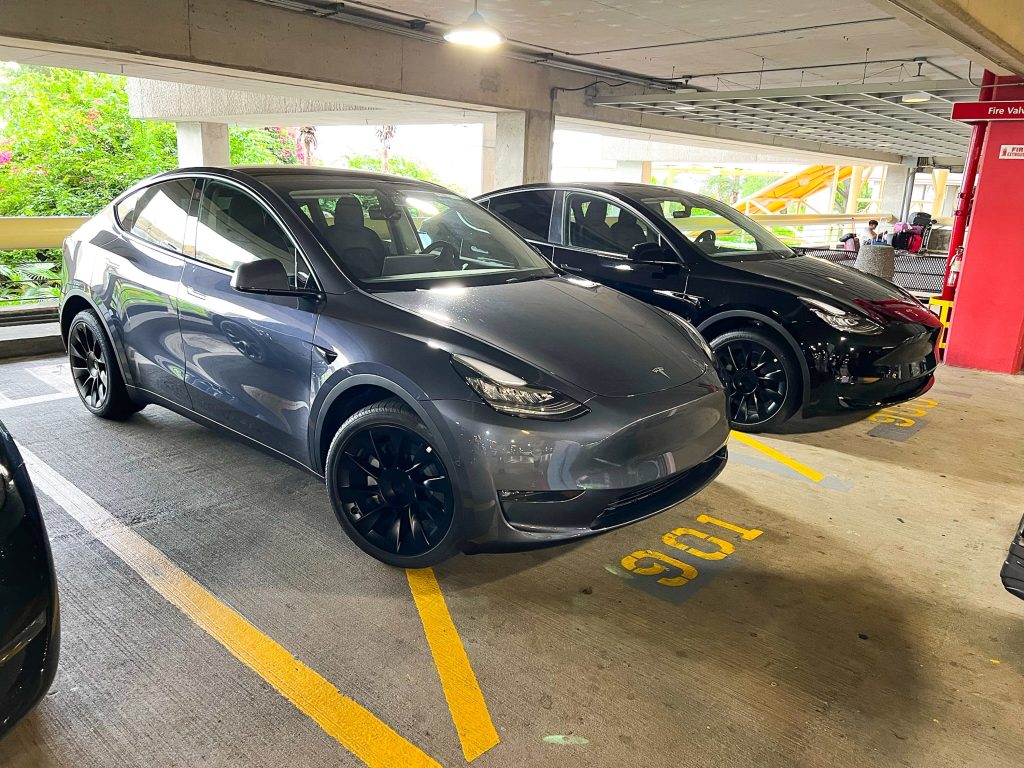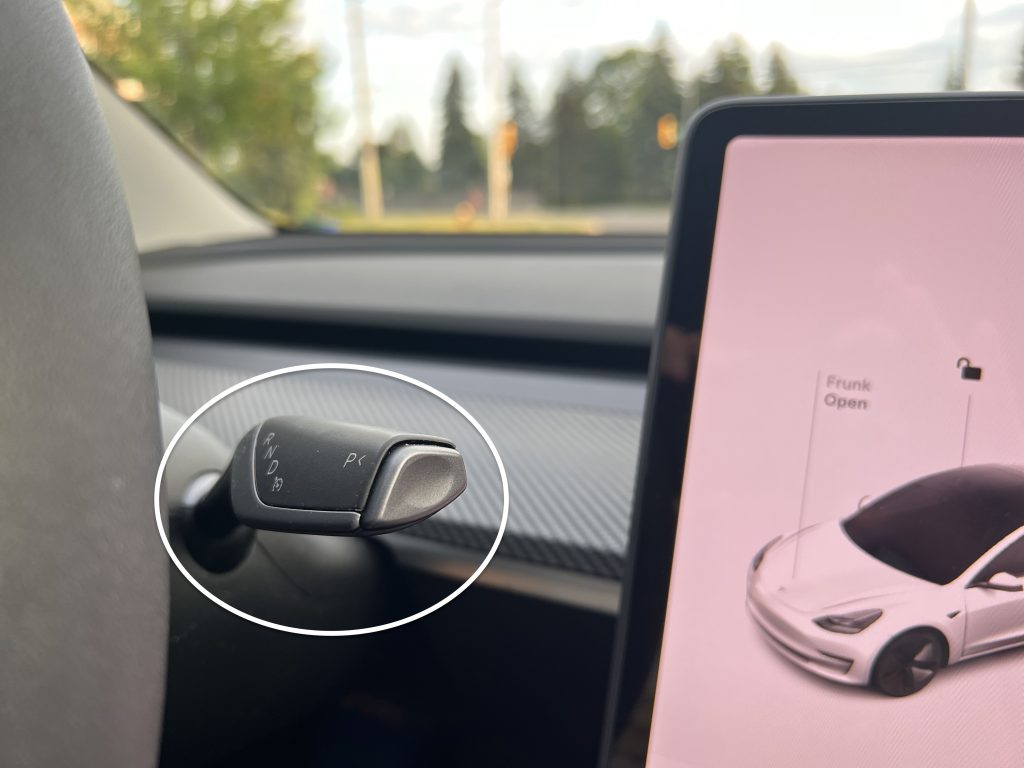By: Otaiba Ahsan

In most gas-powered vehicles, you’ll notice that there’s either a manual lever, switch, or button to engage the parking brake. It’s typically made visibly obvious, as this is a key component of any car. Unfortunately, the parking brake is not as easy to find in a Tesla. Continue for steps on how to engage the parking brake in a Tesla Model 3 and Model Y.
Engaging the Parking Brake
Both the Model 3 and Y only have 2 stocks around the steering wheel, as the majority of functions can be accomplished via the touchscreen. However, it’s not made clear how one would engage the parking brake. In fact, when I took delivery of the car, it’s something that was never mentioned by the Tesla service member when they were taking me through the basics of the vehicle.
To engage the parking brake when in your car, tap Controls > Safety > Parking Brake and follow the onscreen instructions. Alternatively, you can press and hold the button on the end of the drive stalk while your car is in Park. The parking brake operates only on the rear wheels and is independent of the pedal-operated brake system.
NOTE: When you manually apply the parking brake using the touchscreen or by pressing and holding the button on the end of the drive stalk when in Park, a red parking brake indicator will light up on the touchscreen. Also, if for some reason the parking brake experiences an electrical issue, then an amber parking brake indicator is shown, and a fault message is displayed on the touchscreen. Tesla has created a useful visual for both indicator icons.

Disengaging the Parking Brake
To manually release the parking brake, tap Controls > Safety and then press the brake pedal with your foot. Lastly, touch Parking Brake onscreen and your Model 3 or Y should shift into Neutral if it was previously in Park.
NOTE: In the unlikely scenario where your Tesla loses electrical power, you won’t be able to access the touchscreen. As a result, there’s no way to release the parking brake until the car is jump-started. Moreover, your car may display an alert if the road is too steep to safely park on, or if the parking brakes aren’t engaged correctly.
TIP: In icy and snowy conditions, the rear wheels may not have enough traction to prevent your Model 3 or Y from sliding down a slope, especially if winter tires are not being used. Tesla recommends to avoid parking on hills in these types of conditions.
The Bottom Line
The steps on how to engage the parking brake in a Tesla Model 3 and Model Y are short and sweet. When in your car, tap Controls > Safety > Parking Brake and follow onscreen instructions. Alternatively, you can press and hold the button on the end of the drive stalk while your car is in Park. Lastly, to disengage the parking brake, ensure your foot is on the brake and then tap Controls > Safety > Parking Brake again. Your car should shift into Neutral if it was previously in Park.
